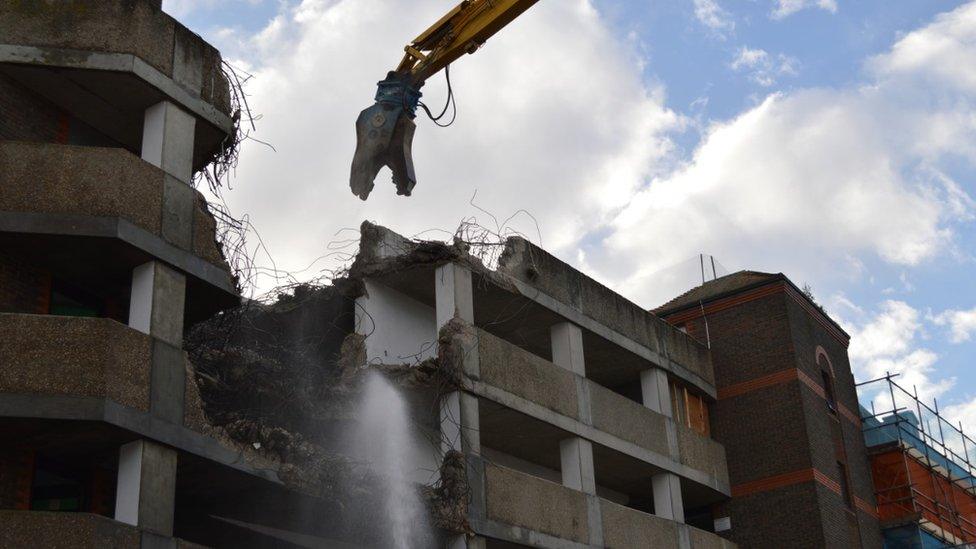Southampton Bargate dig reveals historical artefacts
- Published

Experts are puzzling over where the 17th century plate was made
A plate featuring a bare-chested woman and a cannon ball are among items found by archaeologists preparing a site for a new development in Southampton.
The dig in the city centre is taking place ahead of the redevelopment of the Bargate Quarter, which will see shops and more than 150 flats being built.
Council archaeology official Dr Andy Russel said "exciting" elements of the city's past were being found.
Archaeologists are expected to remain at the site until mid April.
The dig also unearthed a complete 15th century mercury jar, which experts believe was possibly used for treating syphilis and leprosy.
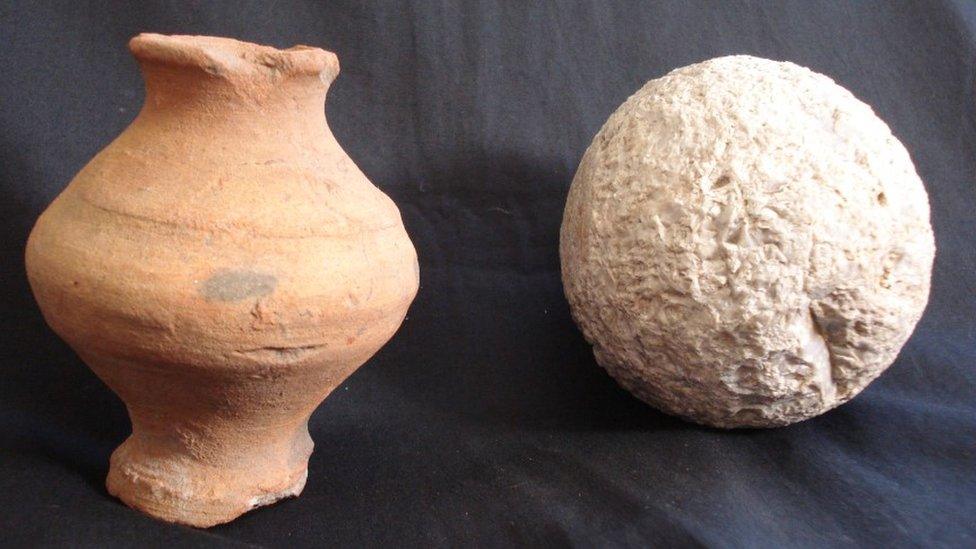
The mercury jar and cannon ball made of flint were found in the medieval town ditch
Experts are also trying to discover the origins of a 17th century plate, which features a Renaissance statue of a bare-chested woman in a grotto.
Suggestions include London, Amsterdam and Pisa.
The items, and the 14th century stone ball, were found in a ditch which was dug outside the town walls after a raid by the French in 1338.
The ditch became the focus of the dig after workers demolished the Bargate shopping centre, which was built in the 1980s.
Dr Russel, of Southampton City Council Archaeology Unit, said the cannon ball was important part of Southampton's military history.
"Southampton was the first town in England to use guns for its defence," he said.
"This stone cannon ball is made of flint, which would shatter on impact and burst into hundreds of razor sharp splinters."
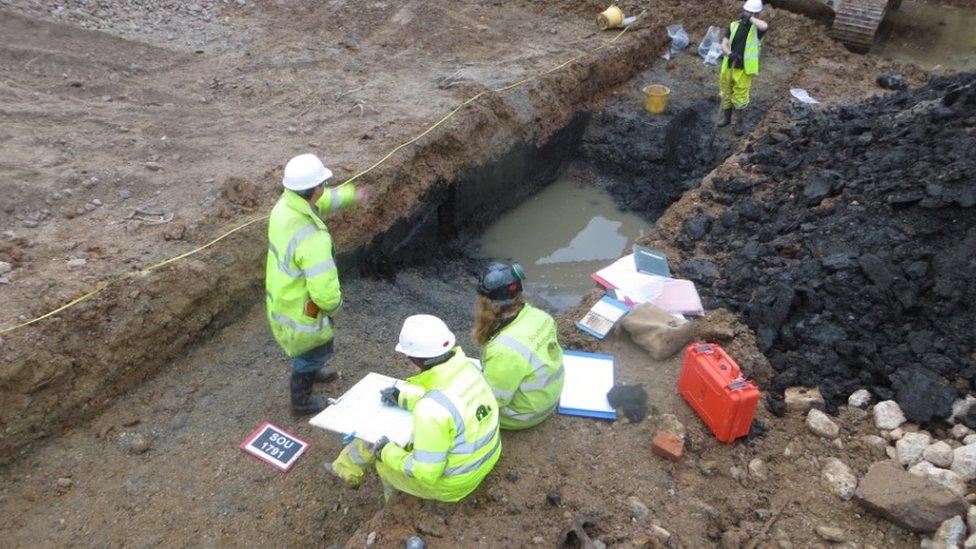
Archaeologists made the finds in a medieval town ditch on the site of the new Bargate Quarter development
Councillor Satvir Kaur, cabinet member for homes and culture, said: "It's exciting that such unique pieces of our heritage have been found. They provide a fascinating insight into what life was like in the city."
The medieval town walls will be the centrepiece of the new Bargate development.
The first student accommodation that is being built as part of the scheme is due to be finished in August, and shops will be open by Christmas.

Southampton's town walls
The oldest sections, Bargate and Eastgate, date from 1180 - alterations were made in about 1290
They were extended following the devastating French raid of 1338. Edward III ordered that walls be built to "close the town", with the western walls completed in 1380
The walls - including eight gates and 29 towers - stretched for one and a quarter miles, with the Bargate as the entrance to the medieval town
In the late 19th Century an idea to demolish the Bargate as an impediment to traffic was defeated following a public campaign. But in the 1930s the adjoining walls were removed to allow traffic to flow on either side.
Roughly half of the walls, 13 of the original towers and six gates are still standing, making them some of the most complete medieval town walls in the country.
Source: Southampton City Council
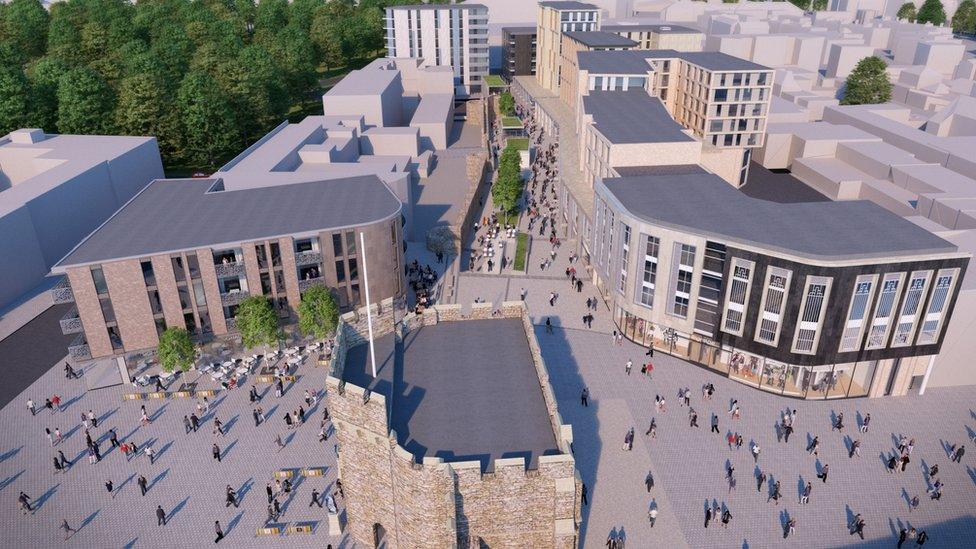
The plans feature a boulevard that includes the city's medieval walls
- Published19 September 2018
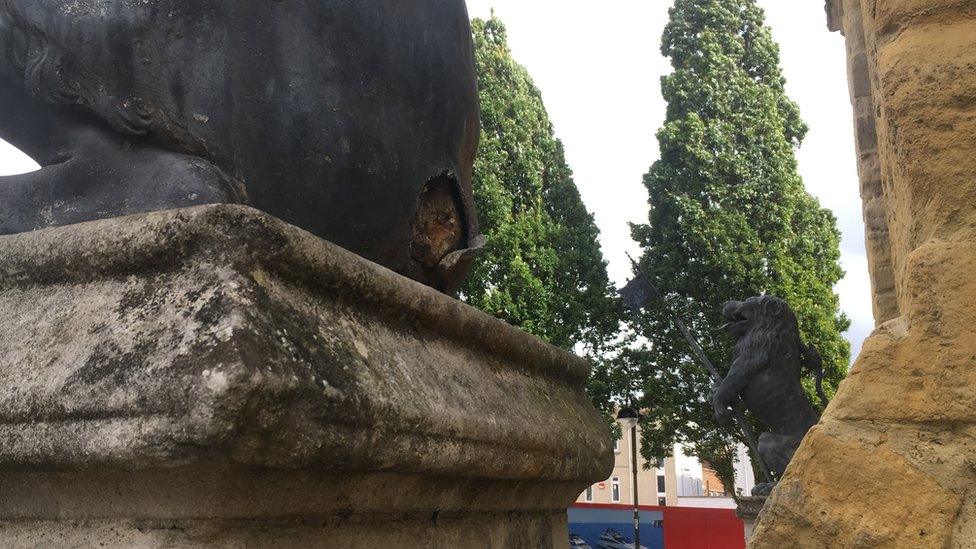
- Published24 November 2017
